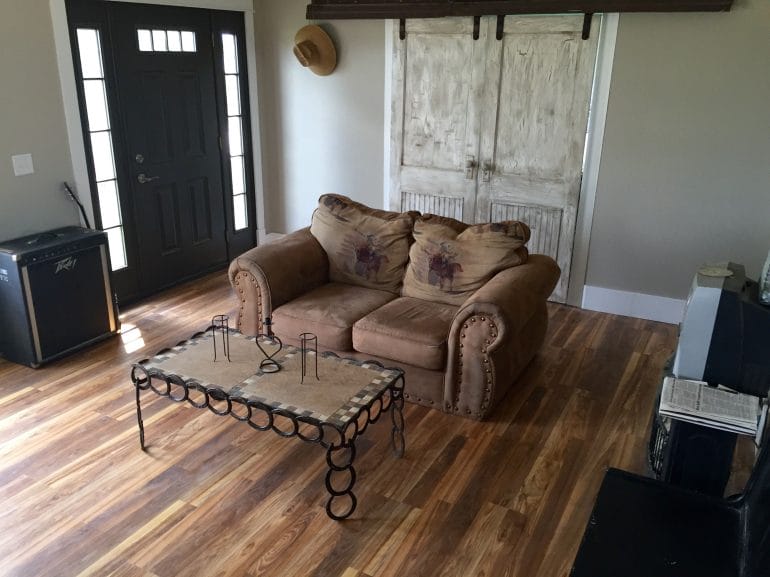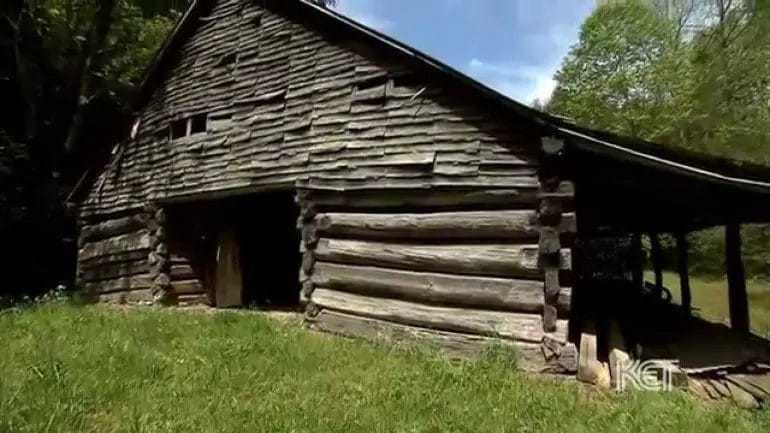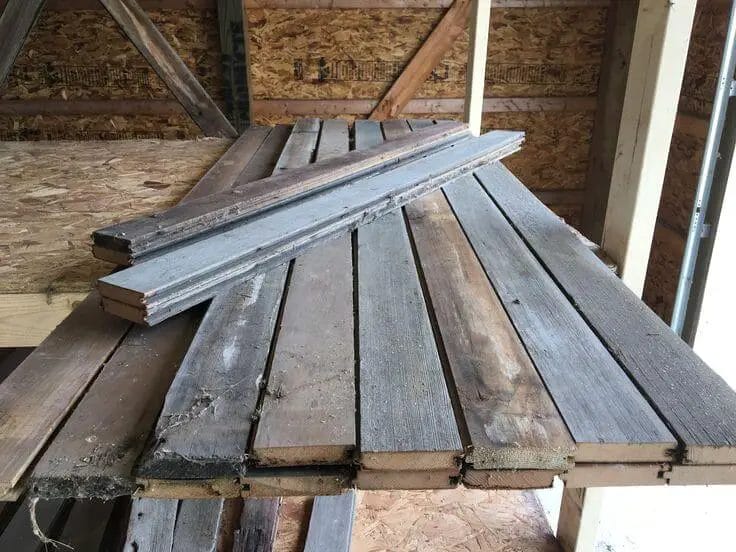Wondering about the value of 100-year-old barn wood? Well, this sought-after material holds both historical and aesthetic appeal, making it highly desirable among homeowners, designers, and craftsmen alike.
The unique character and weathered patina of antique barn wood lend a rustic charm to any space or project. From reclaimed flooring and furniture to accent walls and ceiling beams, its timeless beauty adds warmth and depth to modern interiors.

While the exact worth of 100-year-old barn wood can vary depending on factors such as condition, rarity, and regional demand, it is generally considered a valuable and sustainable resource. Whether you’re repurposing or selling, this aged timber holds incredible potential to enhance your space and create a piece of history.

Factors Affecting the Price of 100 Year Old Barn Wood
When it comes to reclaimed wood, there is nothing quite as unique and beautiful as 100 year old barn wood. The rich history and weathered appearance of these planks make them highly sought after for various projects. However, the price of 100 year old barn wood can vary significantly depending on several factors. In this section, we will explore these factors in detail, enabling you to understand why the price of 100 year old barn wood can fluctuate.
1. Rarity of the Barn Wood
One of the primary factors that impact the price of 100 year old barn wood is its rarity. Not all barns are built to stand the test of time, and those that do often become cherished historical landmarks. As a result, barn wood from these structures is considered highly valuable and prices can be higher. The rarity of the wood can depend on factors such as the age of the barn, its location, the type of wood used, and the overall condition of the wood.
2. Quality of the Wood
The quality of the 100 year old barn wood also plays a significant role in determining its price. Barn wood that is well-preserved and shows minimal signs of decay or damage will be more valuable compared to wood with extensive rot or insect damage. Other factors that contribute to the quality of the wood include its color, grain pattern, and overall aesthetics. Buyers are willing to pay a premium for barn wood that is in excellent condition and requires minimal restoration work.
3. Supply and Demand
As with any commodity, the price of 100 year old barn wood is influenced by the principles of supply and demand. If the supply of barn wood is limited and there is a high demand for it, prices are likely to be higher. Conversely, if the supply is abundant and there is less demand, prices may be more competitive. Factors that affect supply and demand include the availability of barns in a particular region, the popularity of barn wood as a building material, and the current trends in interior design and architecture.
4. Geographic Location
The geographic location of the barn wood can also impact its price. Barn wood that is sourced from specific regions known for their historical significance or unique barn architecture may command higher prices. Additionally, transportation costs can play a role in determining the final price of the wood. If the barn wood needs to be transported over long distances, the cost of shipping can add to its overall price.
5. Finished or Unfinished
Whether the barn wood is sold as finished or unfinished can affect its price. Finished barn wood refers to wood that has been cleaned, treated, and prepared for immediate use. This saves the buyer time and effort in processing the wood themselves. Unfinished barn wood, on the other hand, requires additional work such as cleaning, sanding, and sealing. Generally, finished barn wood will be priced higher due to the added labor and materials involved in preparing the wood for sale.
6. Market Conditions
Finally, market conditions and economic factors can influence the price of 100 year old barn wood. During periods of economic growth and high construction activity, the demand for reclaimed wood may increase, leading to higher prices. Conversely, during economic downturns, the demand may decrease, resulting in lower prices. Additionally, fluctuations in the cost of raw materials and labor can also impact the price of barn wood.
In summary, several factors influence the price of 100 year old barn wood. These include the rarity of the wood, its quality, supply and demand dynamics, geographic location, finished or unfinished status, and market conditions. By considering these factors, buyers and sellers can make informed decisions and ensure fair pricing for this cherished material.

Determining the Market Value of Century-Old Barn Wood
Century-old barn wood has gained popularity in recent years due to its unique and rustic charm. Many people are interested in using this reclaimed wood for various projects, such as furniture making, interior design, and home renovations. However, determining the market value of century-old barn wood can be a challenging task, as it depends on several factors.
1. Rarity and Availability
The scarcity of century-old barn wood plays a significant role in determining its market value. If the wood is rare and not readily available, its price tends to be higher. Factors such as the age and condition of the barn, as well as the location and historical significance, can impact the rarity and availability of the wood.
2. Quality and Condition
The quality and condition of the century-old barn wood greatly affect its market value. Wood that is well-preserved, free from pests, and shows minimal signs of wear and tear is considered to be of higher quality and more desirable. The presence of unique characteristics, such as weathered patina and nail holes, can also increase its value.
3. Size and Quantity
The size and quantity of the century-old barn wood can influence its market value. Larger pieces of wood or bundles of multiple boards may fetch a higher price compared to smaller or individual pieces. The demand for certain sizes or quantities can also affect the perceived value.
4. Historical and Cultural Significance
Century-old barn wood that has historical or cultural significance can command a higher market value. Wood salvaged from barns with a rich history or ties to a specific time period or region may be more sought after by collectors and enthusiasts.
5. Market Demand
The demand for century-old barn wood varies geographically and depends on current design and architectural trends. Areas with a higher demand and limited supply may experience higher market prices, while regions with less interest in the rustic aesthetic may have lower prices.
6. Sustainability and Environmental Factors
The growing emphasis on sustainability and eco-consciousness has contributed to the popularity of century-old barn wood. Buyers are often willing to pay a premium for wood that has been reclaimed and repurposed, as it reduces the need for new timber production and promotes recycling.
In summary, determining the market value of century-old barn wood involves considering factors such as rarity, quality, size, historical significance, market demand, and sustainability. It is essential to assess these factors based on the specific characteristics and attributes of the wood to arrive at a fair and accurate valuation.

Investing in Antique Barn Wood: Is it Worth it?
Antique barn wood has become an increasingly popular choice for homeowners, designers, and builders looking to add character and charm to their spaces. This unique material is sourced from old barns that have been dismantled, giving it a rustic and weathered appearance that cannot be replicated. However, before you dive into investing in antique barn wood, it’s important to consider whether it’s worth it. In this section, we will explore the pros and cons of investing in antique barn wood to help you make an informed decision.
1. Unique Aesthetic Appeal
One of the key reasons why people choose antique barn wood is its unmatched aesthetic appeal. The rich history and aging process of the wood create a unique texture and patina that simply cannot be replicated with new materials. Each piece of antique barn wood tells a story and adds a sense of warmth and character to any space it is used in. Whether you’re looking to create a rustic farmhouse interior or add a touch of authenticity to a modern design, antique barn wood can elevate the look and feel of your project.
2. Environmental Sustainability
Investing in antique barn wood is not only aesthetically pleasing but also environmentally sustainable. By repurposing wood from old barns, you are giving new life to materials that would otherwise go to waste. This helps to reduce the demand for new timber and minimizes the environmental impact of deforestation. Additionally, antique barn wood is often reclaimed and salvaged locally, reducing the carbon footprint associated with transportation.
3. Durability and Longevity
One of the main advantages of investing in antique barn wood is its durability and longevity. The wood used in old barns has already withstood the test of time, proving its ability to withstand various weather conditions and pests. This means that when properly cared for, antique barn wood can last for generations. Its strength and stability make it an excellent choice for flooring, furniture, accent walls, and other applications that require a robust and long-lasting material.
4. Limited Supply and High Demand
While the unique qualities of antique barn wood make it highly desirable, they also contribute to its limited supply and high demand. As old barns continue to deteriorate and be replaced with modern structures, the availability of antique barn wood decreases. This scarcity adds to its value and can result in higher prices compared to new, mass-produced wood. However, the investment potential of antique barn wood should be considered in light of its limited supply and the potential for its value to appreciate over time.
5. Potential Challenges and Drawbacks
While there are many benefits to investing in antique barn wood, it’s important to be aware of potential challenges and drawbacks. First, sourcing and acquiring high-quality antique barn wood can be a time-consuming and costly process. The wood needs to be carefully inspected for structural integrity and treated for any pests or mold. Additionally, the unique dimensions and irregularities of antique barn wood may require custom fitting and additional labor during installation. It’s also worth considering that the weathered appearance of antique barn wood may not be suitable for every design aesthetic.
Summary
Investing in antique barn wood can offer a range of benefits, including its unique aesthetic appeal, environmental sustainability, durability, and potential for value appreciation. However, it’s important to consider the limited supply, high demand, and potential challenges associated with sourcing and using antique barn wood. Ultimately, the decision to invest in antique barn wood depends on your personal preferences, project requirements, and budget. With careful consideration and proper planning, antique barn wood can be a worthwhile investment that adds timeless beauty and character to your space.
Selling and Appraising 100 Year Old Barn Wood: What You Need to Know
Do you have a century-old barn on your property that is no longer in use? Are you considering selling the wood from the barn, but you’re not sure where to start? Or perhaps you have come across an old barn wood that you want to appraise for its value? In this section, we will provide you with all the information you need to know about selling and appraising 100-year-old barn wood.
1. Understanding the Value of Barn Wood
Barn wood holds a unique charm and appeal due to its age, history, and weathered appearance. It is highly sought after by homeowners, builders, and furniture makers for its rustic and vintage aesthetic. The value of 100-year-old barn wood is determined by several factors, including:
- Rarity and availability
- Quality and condition of the wood
- Size and dimensions
- Historical significance
- Market demand
By understanding these factors, you can better assess the potential value of your barn wood.
2. Preparing the Barn Wood for Sale
Before selling your barn wood, it’s important to prepare it properly to maximize its appeal and value. Here are some essential steps to follow:
- Clean and remove any nails or metal objects from the wood.
- Sand down the surfaces to remove rough edges and splinters.
- Treat the wood to protect it from pests and decay.
- Consider staining or sealing the wood to enhance its appearance.
By taking these steps, you can ensure that your barn wood is in the best possible condition for potential buyers.
3. Finding Buyers for Your Barn Wood
There are various avenues you can explore to sell your 100-year-old barn wood:
- Local salvage yards or reclaimed wood dealers: These businesses specialize in buying and selling reclaimed materials.
- Online marketplaces: Platforms like eBay, Etsy, or Craigslist provide a wide reach for potential buyers.
- Local contractors and builders: They may be interested in using barn wood for construction or renovation projects.
- Antique shops or furniture makers: These establishments often have a demand for unique and aged materials.
It’s important to research and compare prices from different buyers to ensure that you get a fair deal for your barn wood.
4. Appraising the Value of Barn Wood
If you have come across 100-year-old barn wood and want to appraise its value, it’s best to consult with a professional appraiser who specializes in reclaimed materials. They will consider various factors, including the wood’s condition, rarity, historical significance, and market demand to determine its worth. An appraiser will provide you with an accurate valuation and documentation for insurance or selling purposes.
5. Legal Considerations
Before selling or appraising barn wood, it’s essential to understand and comply with any legal requirements or restrictions. Depending on your location, there may be regulations regarding the removal and sale of historic materials. Additionally, you may need to obtain permits or permissions to dismantle or transport the barn wood. Familiarize yourself with local laws and consult with professionals if needed to ensure legal compliance.
Summary
When it comes to selling and appraising 100-year-old barn wood, understanding its value, preparing it for sale, finding suitable buyers, and consulting with professionals for appraisal are crucial steps. By following the guidelines outlined in this section, you can navigate the process with confidence and maximize the value of your barn wood.
FAQs
What is the worth of 100-year-old barn wood?
The value of 100-year-old barn wood depends on several factors such as its condition, rarity, and demand in the market. Generally, reclaimed barn wood can be priced between $5 to $15 per square foot. However, for a specific appraisal, it is best to consult a local antique or reclaimed wood dealer.
Conclusion
In conclusion, the value of 100-year-old barn wood can vary greatly depending on several factors. The rarity, condition, and demand for such wood play significant roles in determining its worth. Additionally, the market and location also impact its price. While it is difficult to accurately estimate the exact value without proper evaluation, barn wood is highly sought after for its unique character and historical significance. Whether you are a collector, a craftsman, or an interior designer, investing in and repurposing 100-year-old barn wood can add a touch of rustic beauty and charm to any project.
